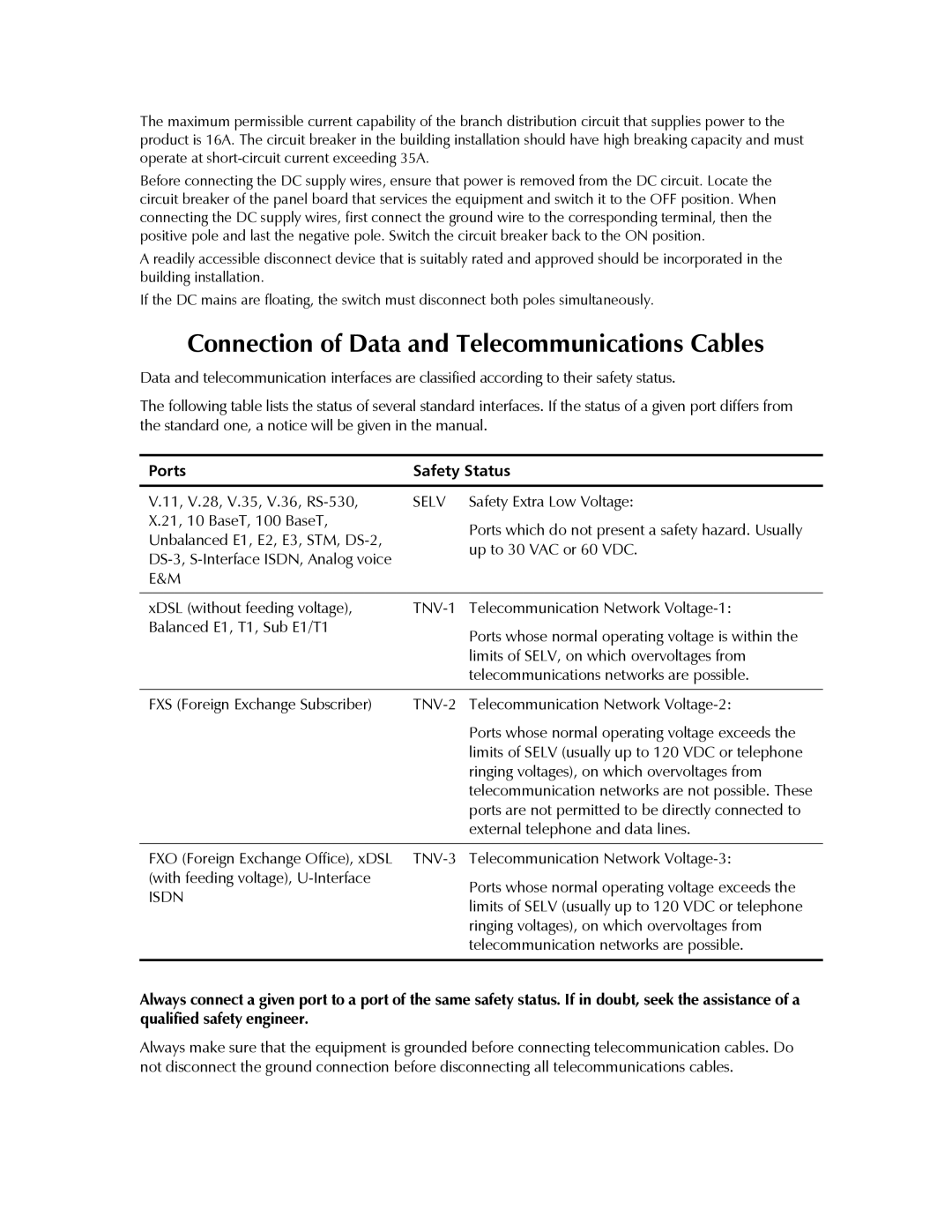
The maximum permissible current capability of the branch distribution circuit that supplies power to the product is 16A. The circuit breaker in the building installation should have high breaking capacity and must operate at
Before connecting the DC supply wires, ensure that power is removed from the DC circuit. Locate the circuit breaker of the panel board that services the equipment and switch it to the OFF position. When connecting the DC supply wires, first connect the ground wire to the corresponding terminal, then the positive pole and last the negative pole. Switch the circuit breaker back to the ON position.
A readily accessible disconnect device that is suitably rated and approved should be incorporated in the building installation.
If the DC mains are floating, the switch must disconnect both poles simultaneously.
Connection of Data and Telecommunications Cables
Data and telecommunication interfaces are classified according to their safety status.
The following table lists the status of several standard interfaces. If the status of a given port differs from the standard one, a notice will be given in the manual.
Ports | Safety Status | |
|
| |
V.11, V.28, V.35, V.36, | SELV Safety Extra Low Voltage: | |
X.21, 10 BaseT, 100 BaseT, | Ports which do not present a safety hazard. Usually | |
Unbalanced E1, E2, E3, STM, | ||
up to 30 VAC or 60 VDC. | ||
| ||
E&M |
|
xDSL (without feeding voltage), Balanced E1, T1, Sub E1/T1
Ports whose normal operating voltage is within the limits of SELV, on which overvoltages from telecommunications networks are possible.
FXS (Foreign Exchange Subscriber) |
| Telecommunication Network |
|
| Ports whose normal operating voltage exceeds the |
|
| limits of SELV (usually up to 120 VDC or telephone |
|
| ringing voltages), on which overvoltages from |
|
| telecommunication networks are not possible. These |
|
| ports are not permitted to be directly connected to |
|
| external telephone and data lines. |
|
|
|
FXO (Foreign Exchange Office), xDSL |
| Telecommunication Network |
(with feeding voltage), |
| Ports whose normal operating voltage exceeds the |
ISDN |
| |
| limits of SELV (usually up to 120 VDC or telephone | |
|
| |
|
| ringing voltages), on which overvoltages from |
|
| telecommunication networks are possible. |
|
|
|
Always connect a given port to a port of the same safety status. If in doubt, seek the assistance of a qualified safety engineer.
Always make sure that the equipment is grounded before connecting telecommunication cables. Do not disconnect the ground connection before disconnecting all telecommunications cables.
